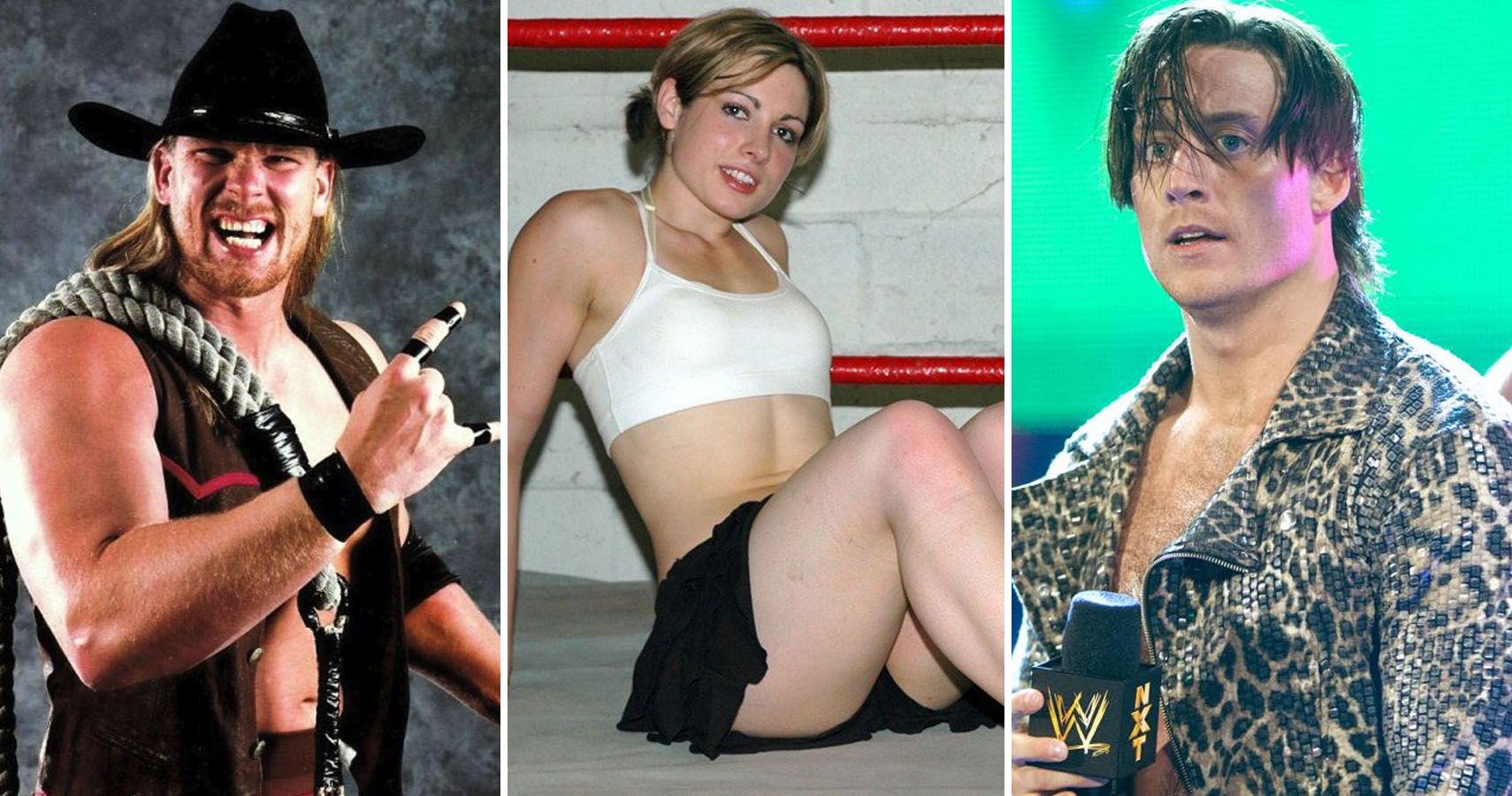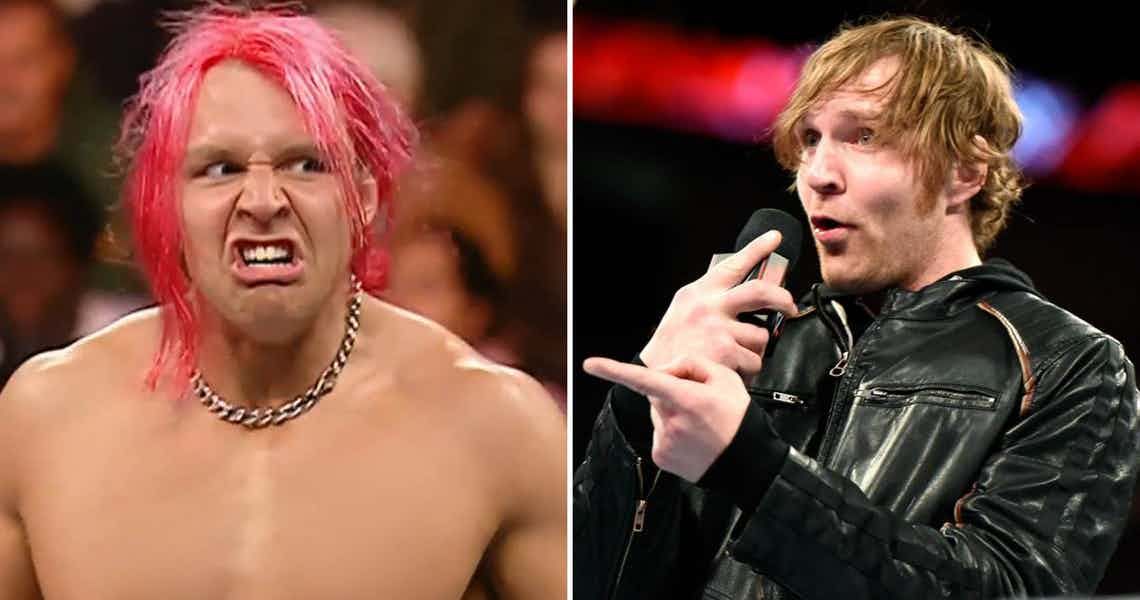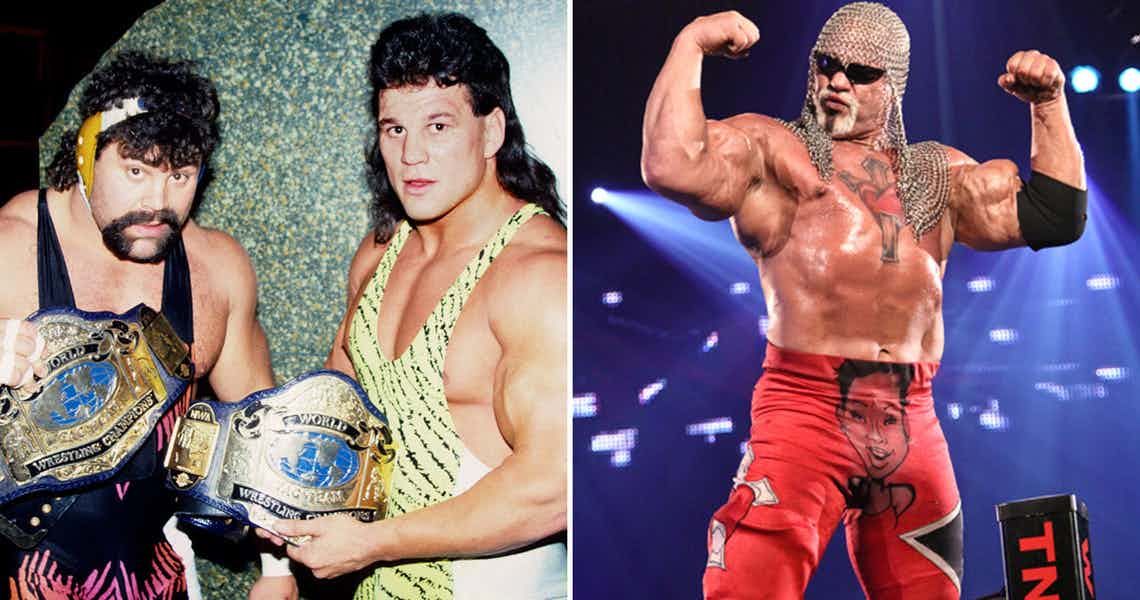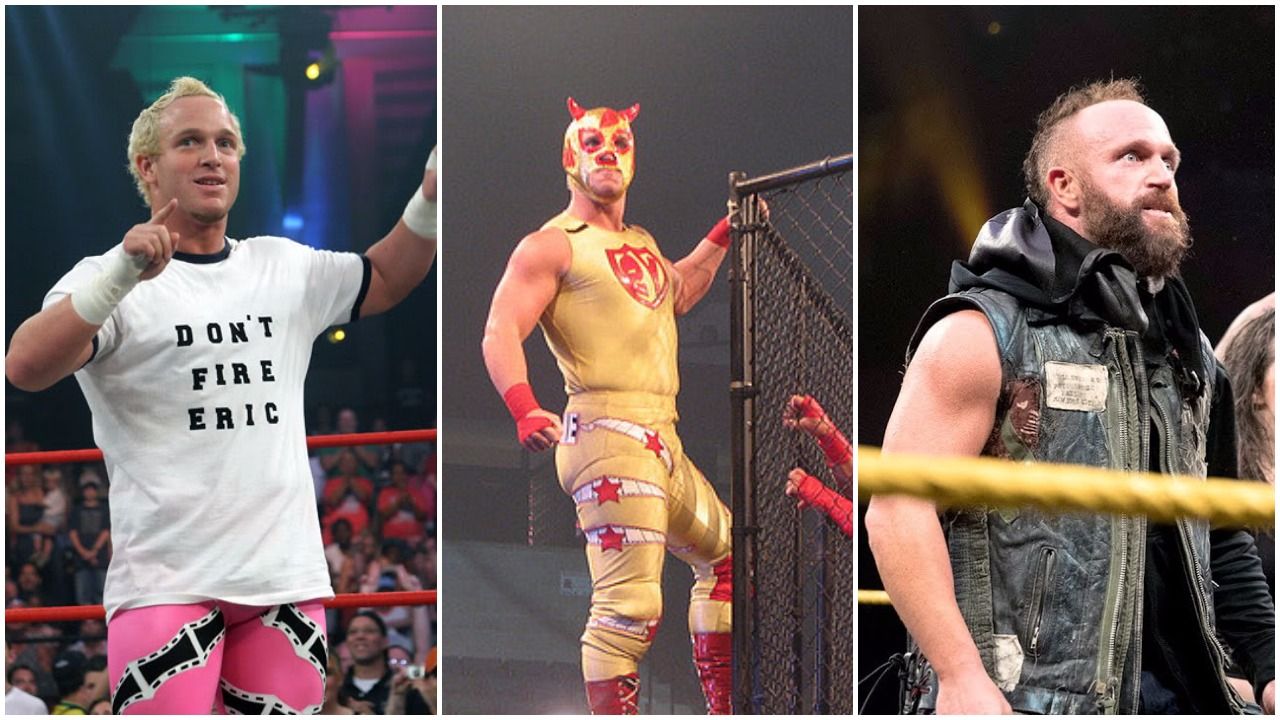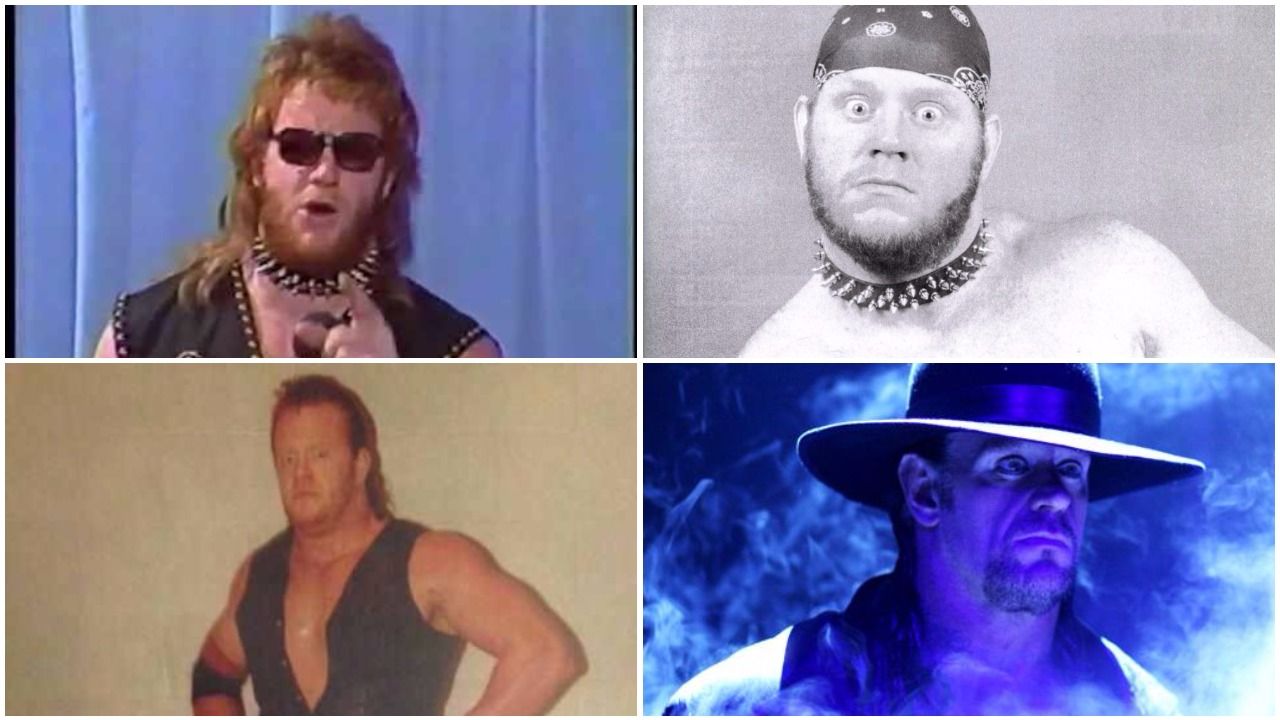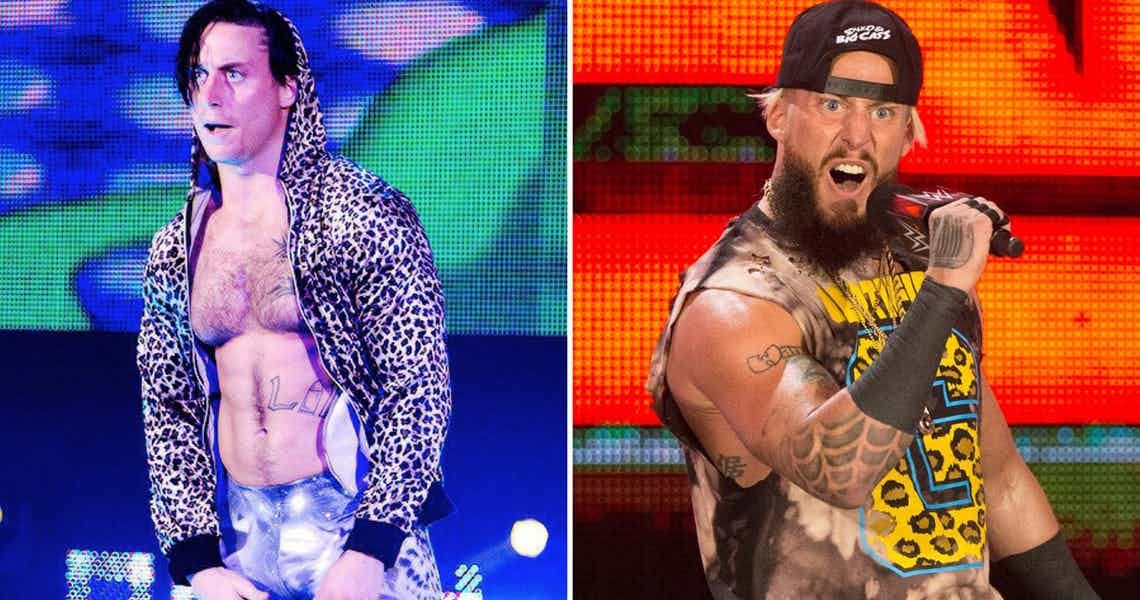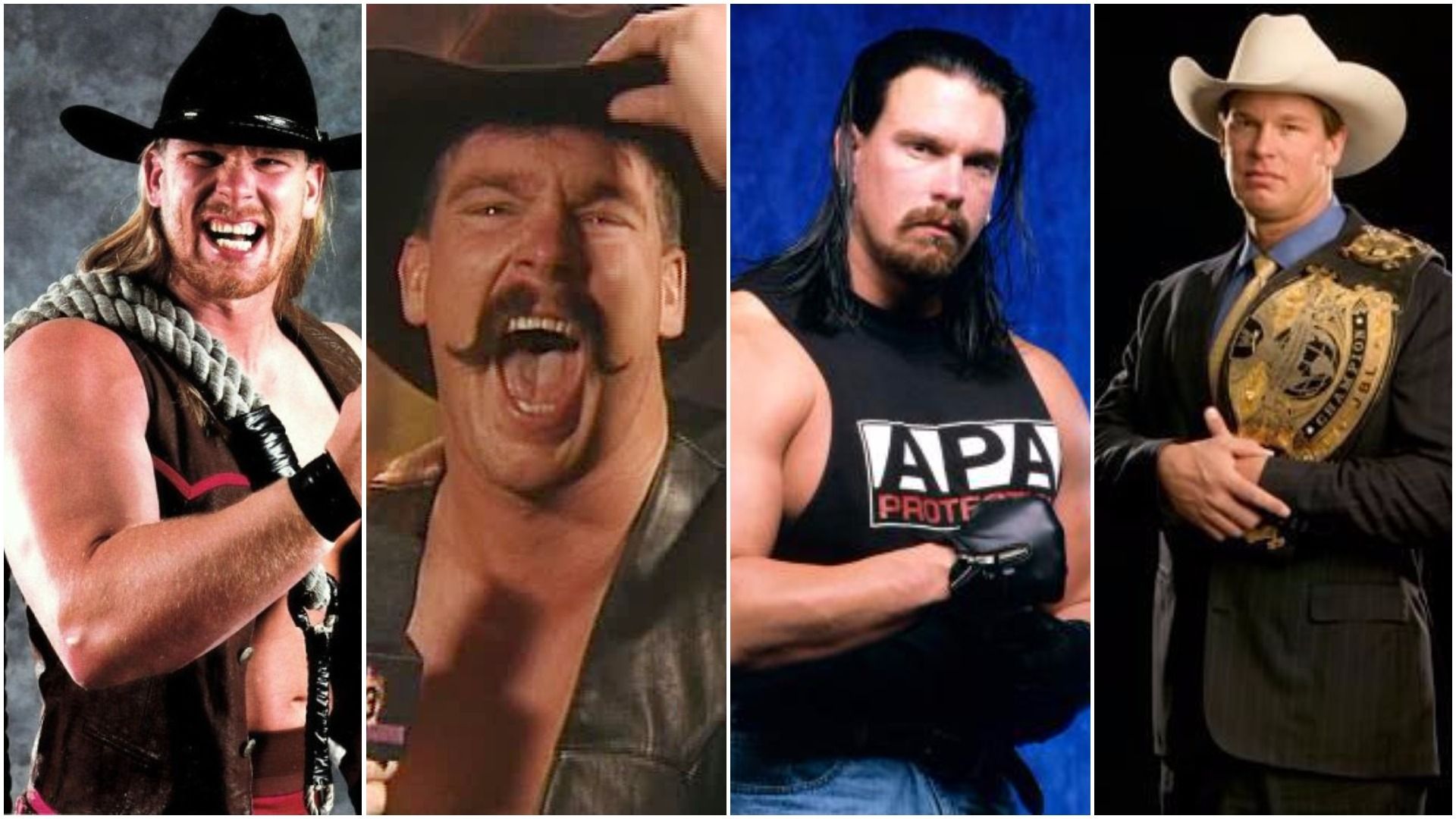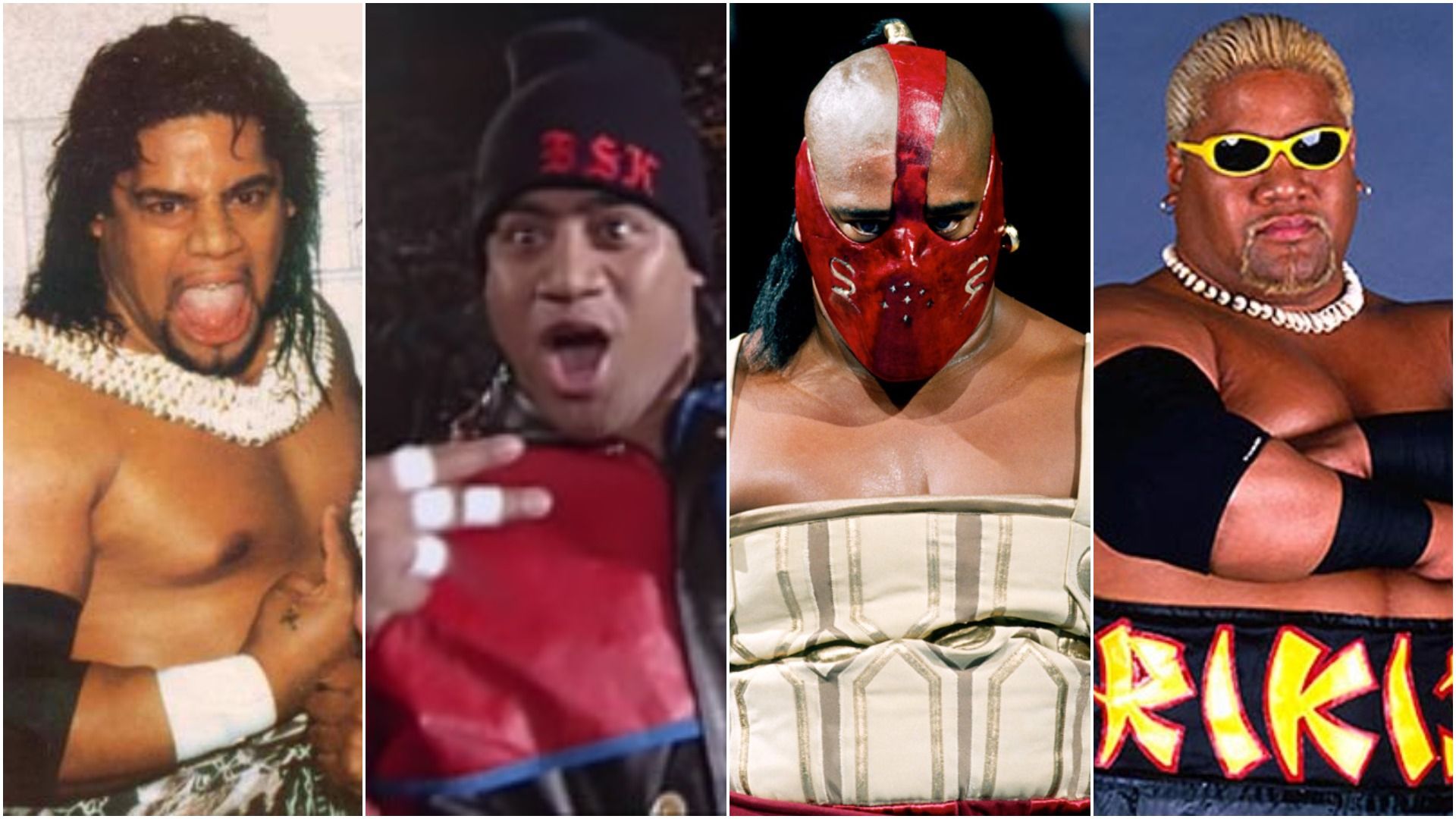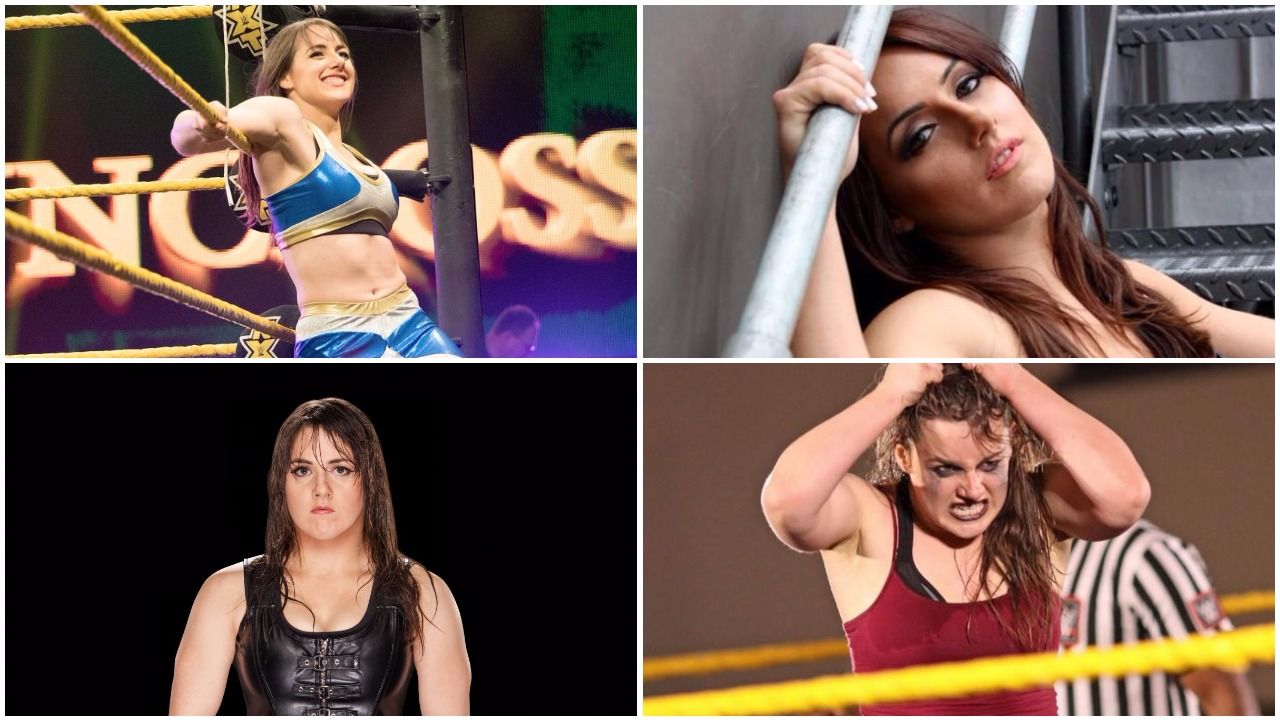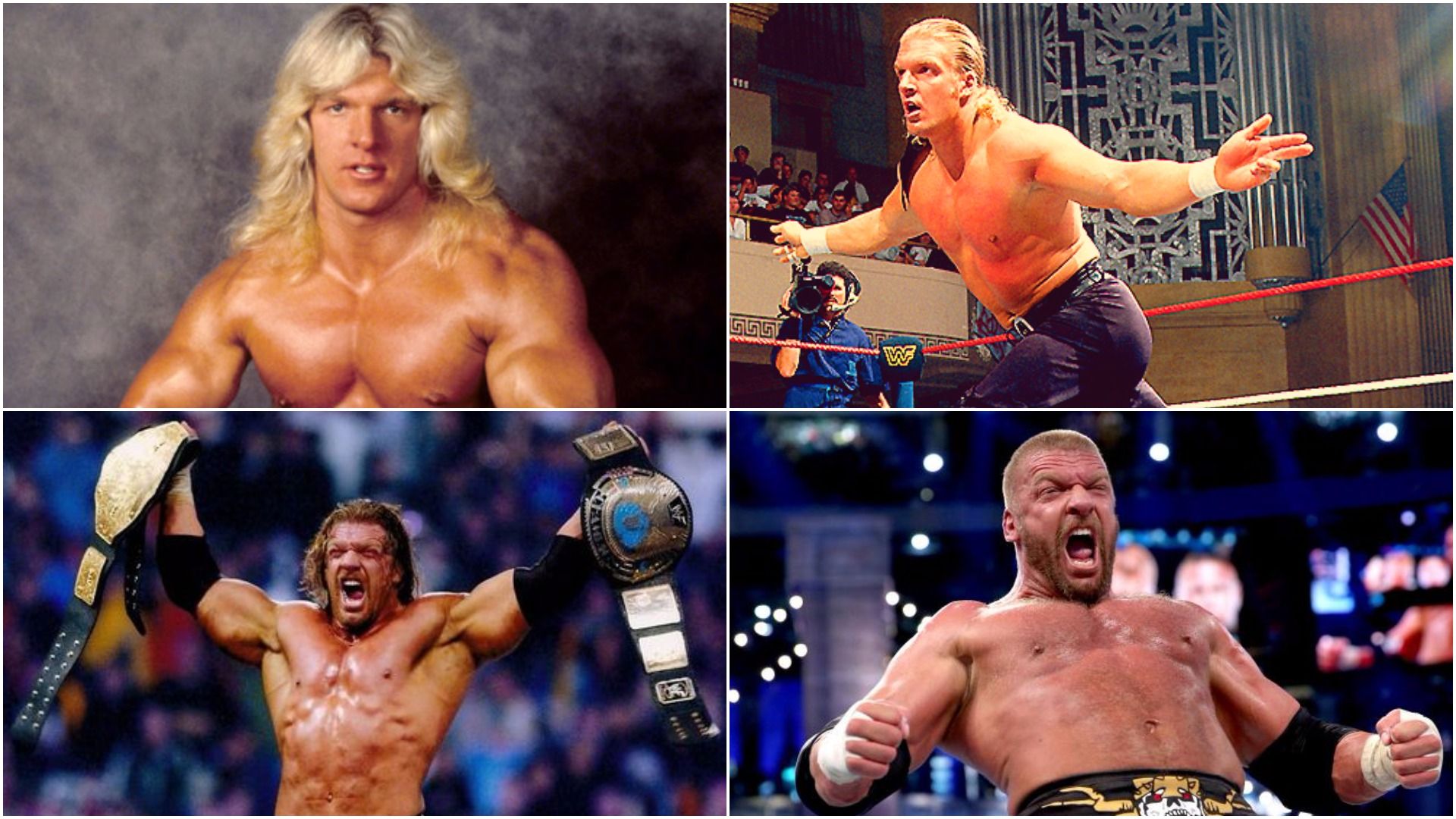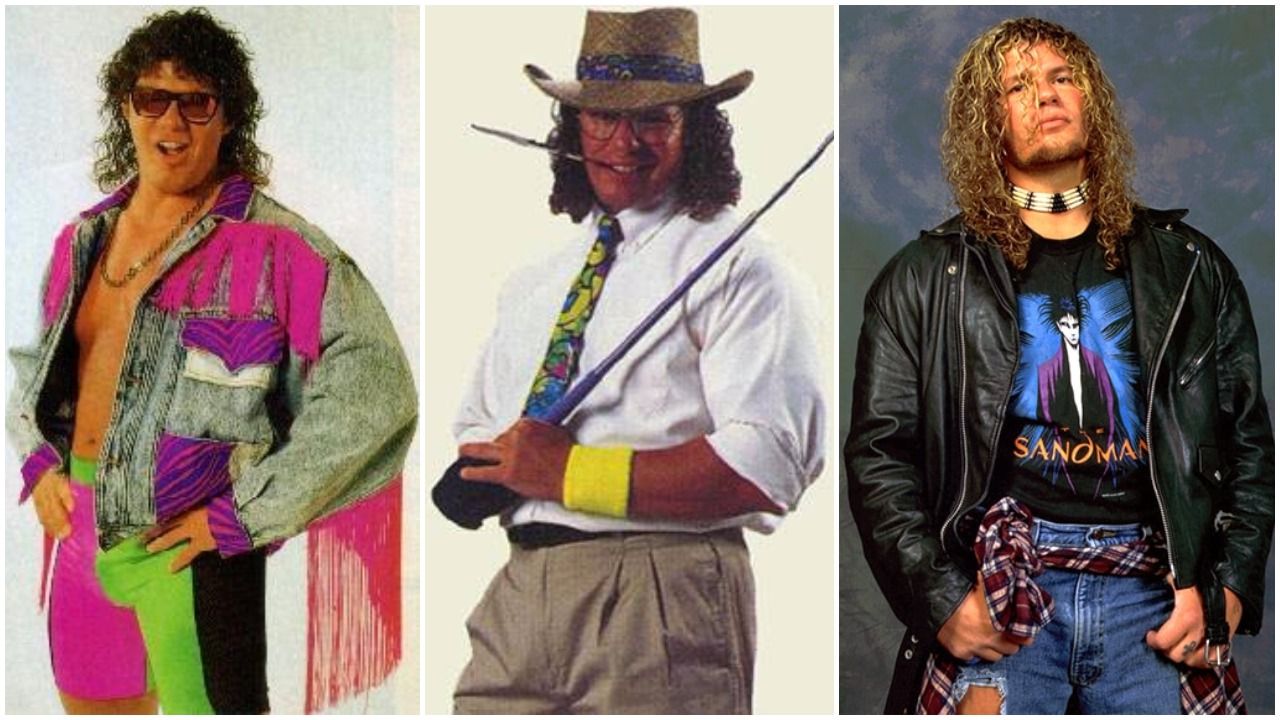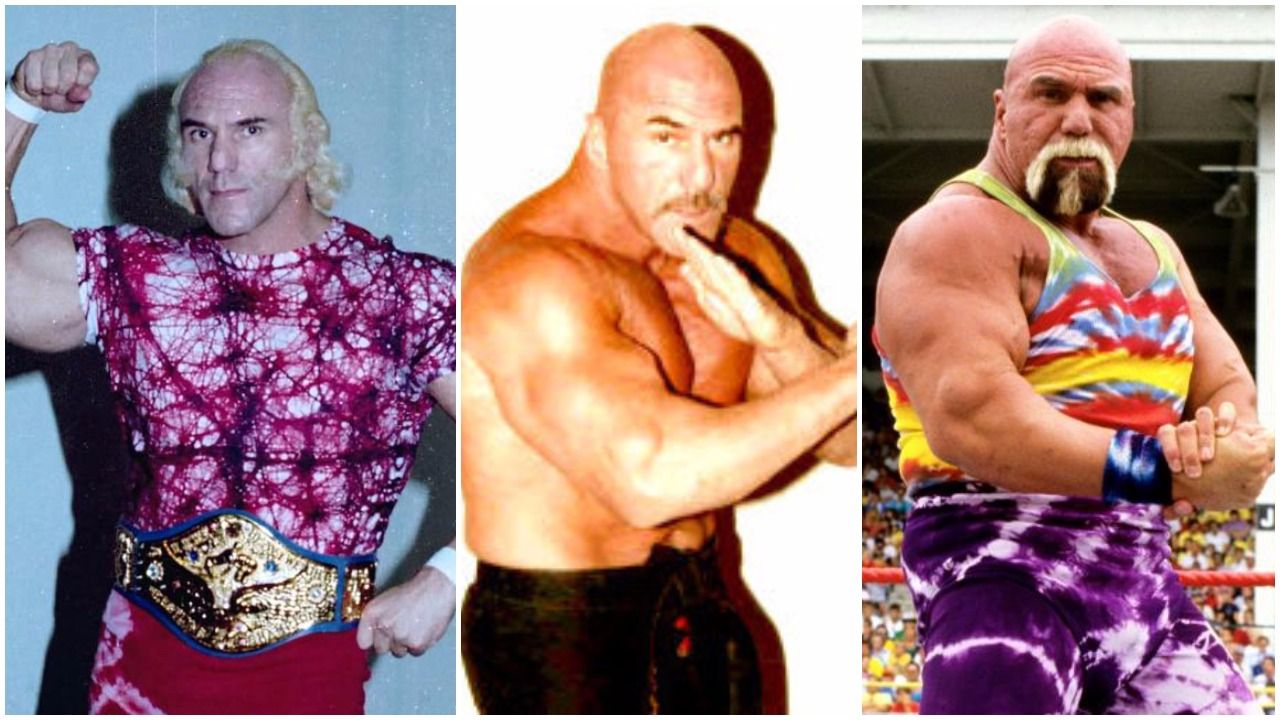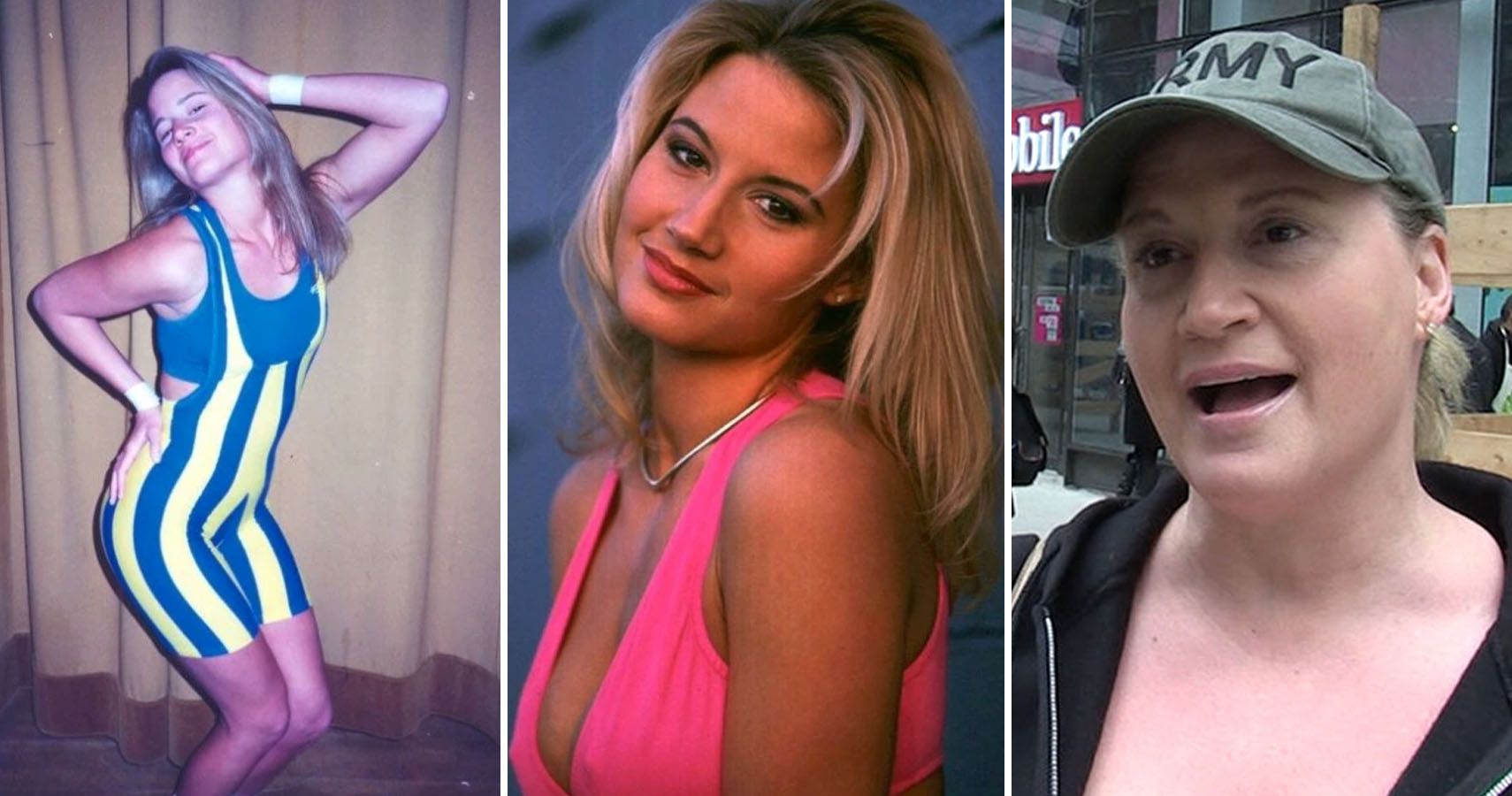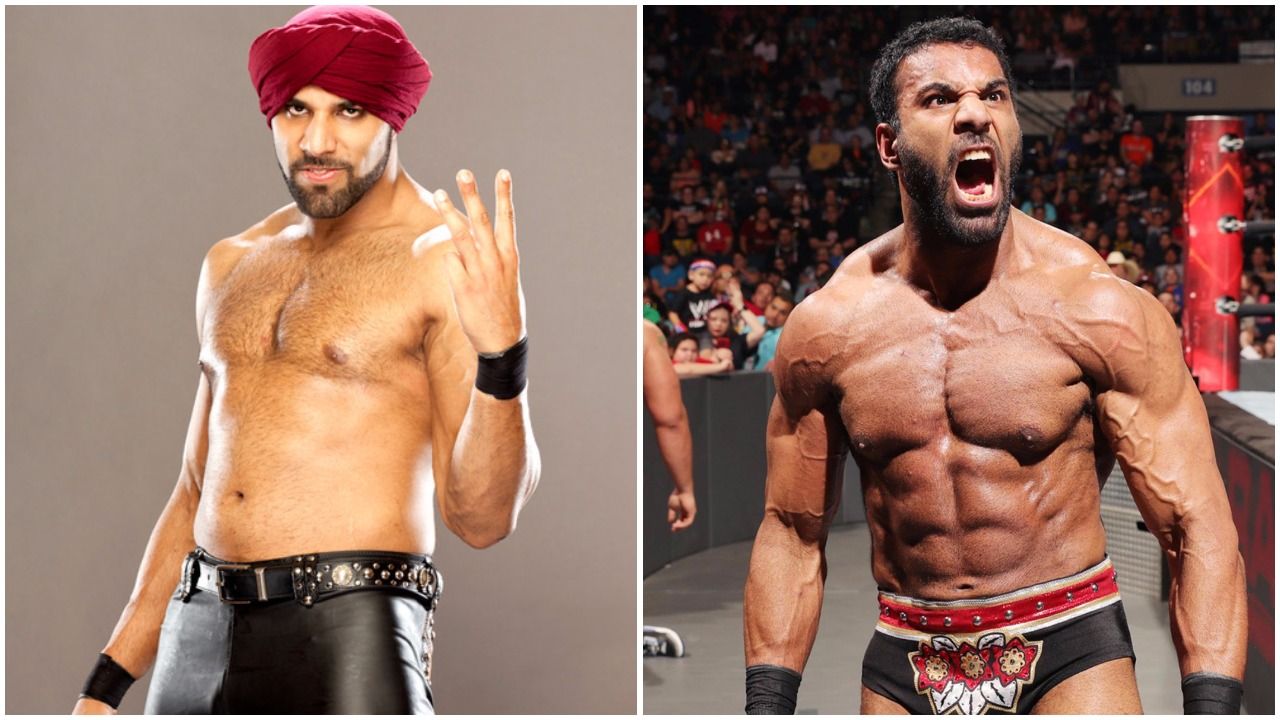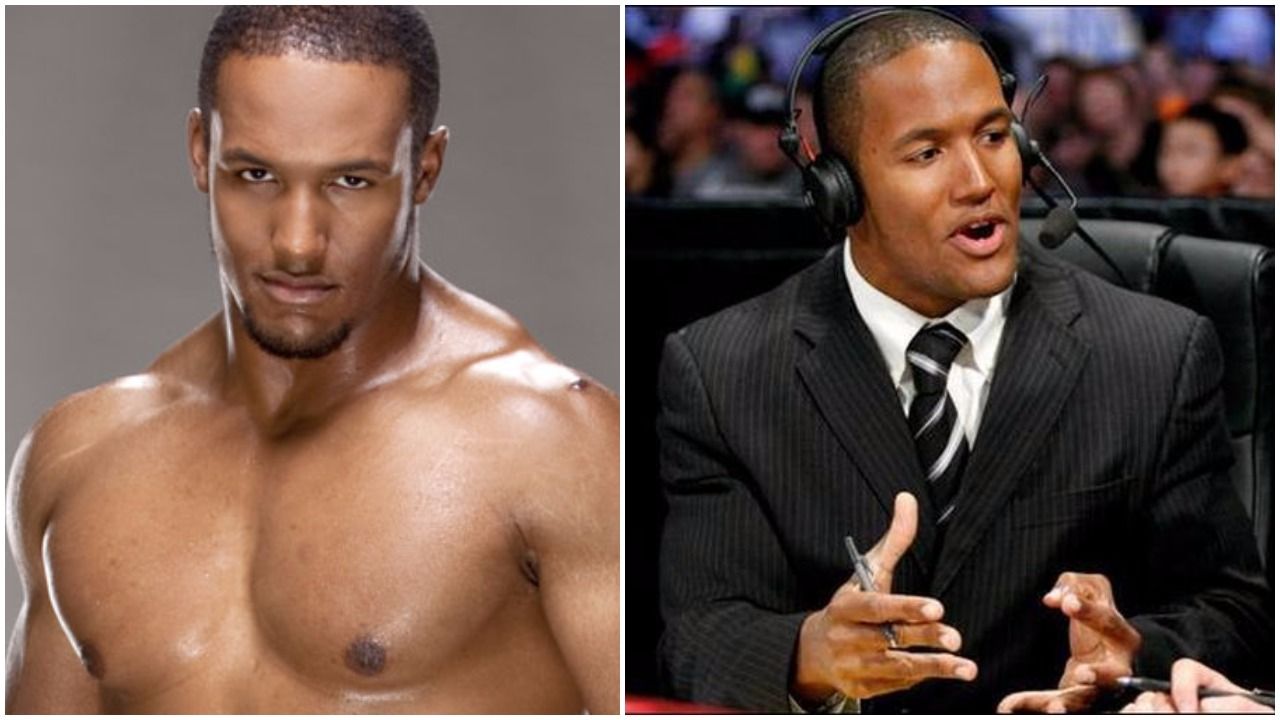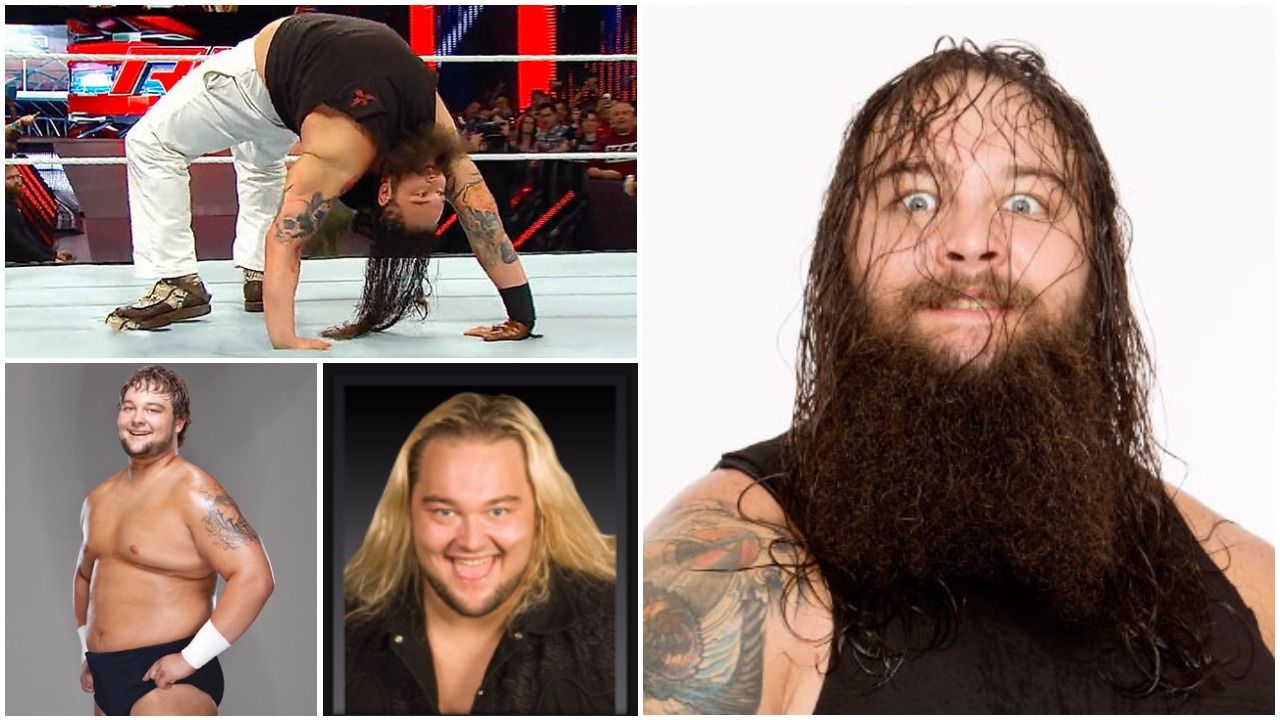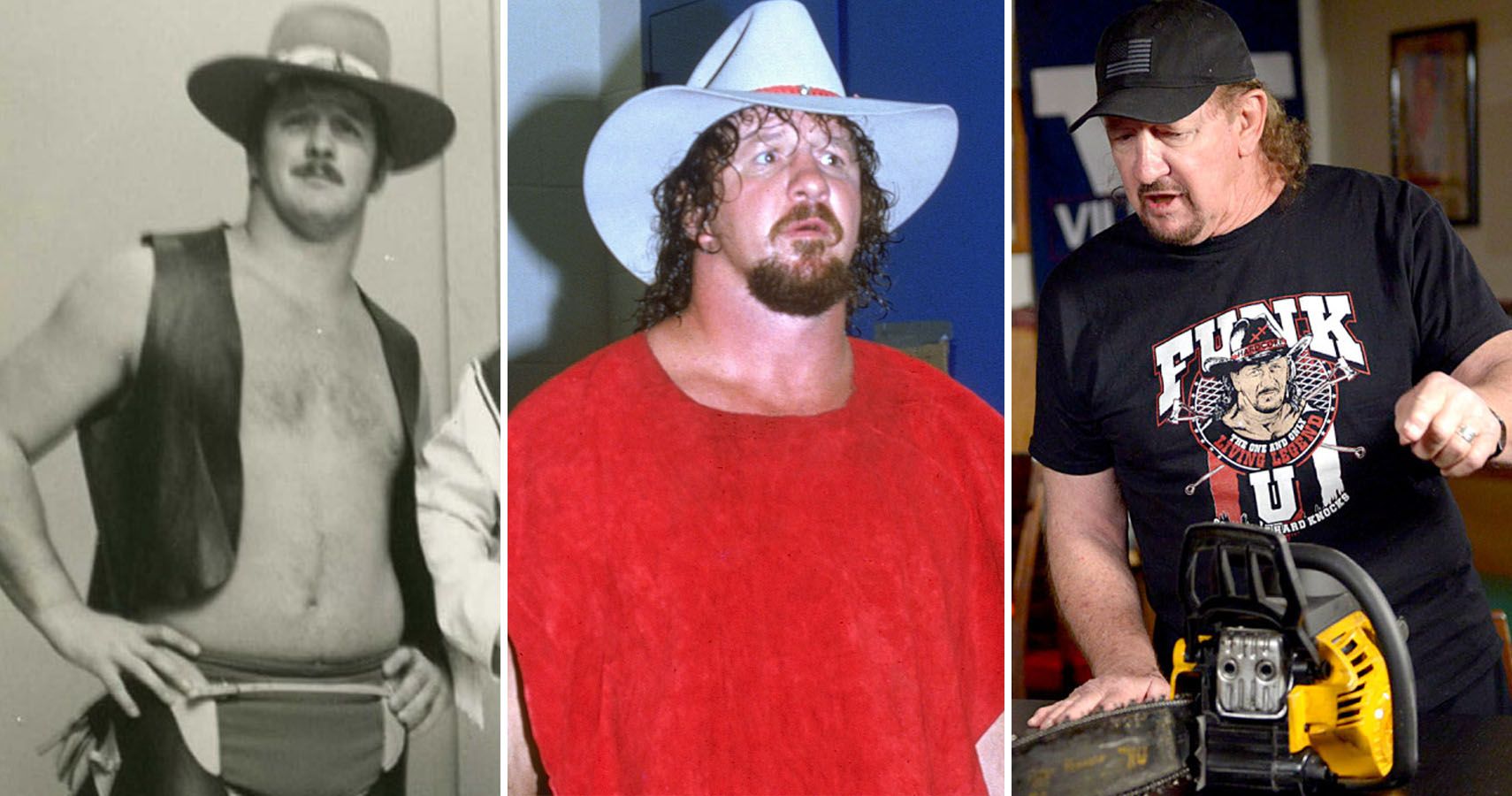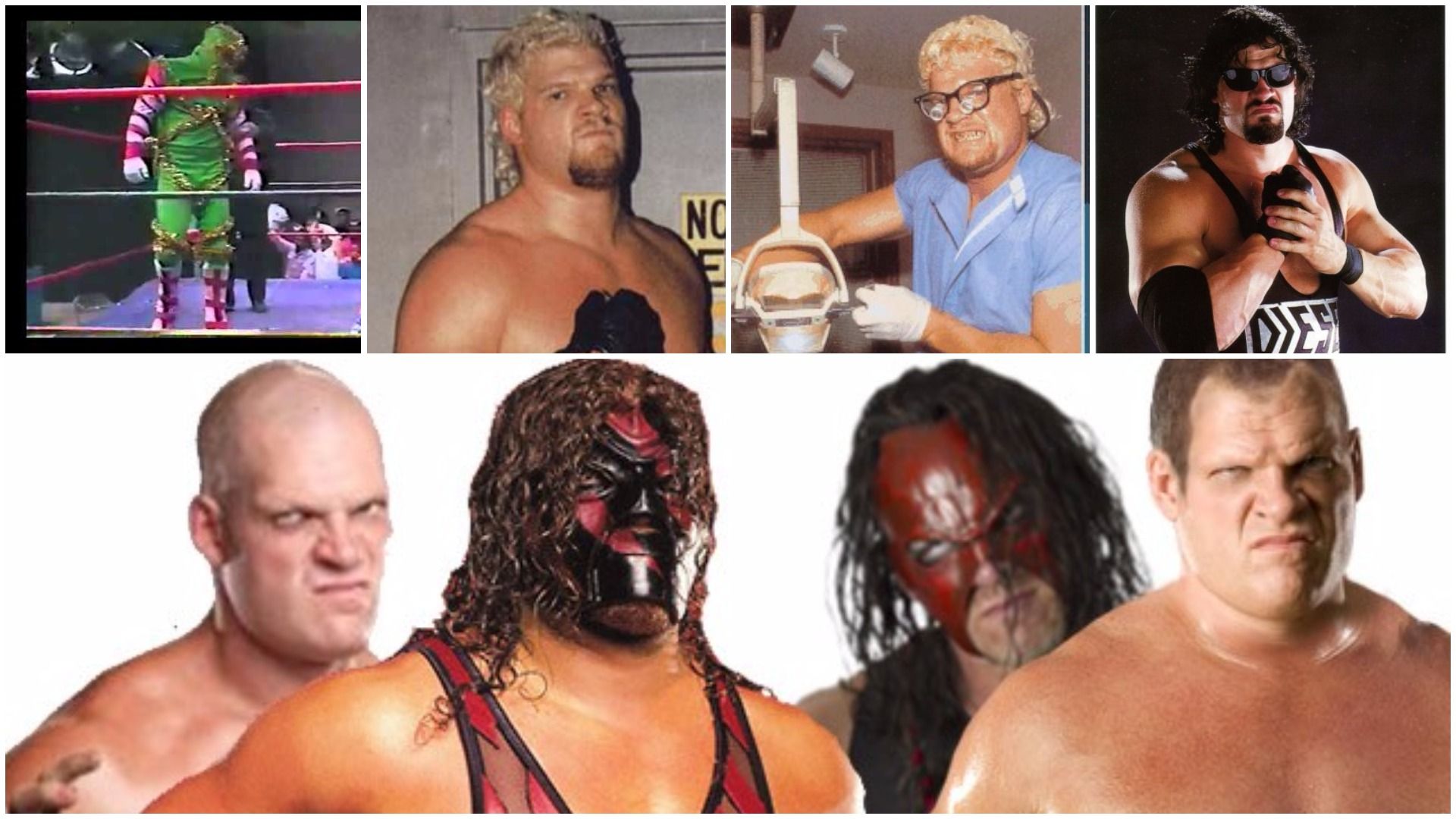Professional wrestling is built on change. Wrestlers have to constantly tweak and evolve their characters in order to stay fresh in the eyes of the audience. They used to do this by moving from territory to territory, but it has become increasingly difficult in the age of WWE dominance and the Internet. The fact that the WWE’s developmental territory, NXT, is one of its most watched Network shows further complicates the issue.
Quick alterations to hair can have a significant impact on a character while providing the option of a further reset. Body art is a more permanent commitment, while physique changes can have effects that last beyond a career in the ring. The physical damage sustained in the ring itself can alter an appearance, particularly forehead scarring.
Wrestlers still make significant physical changes in spite of these obstacles. Many, like Ric Flair, have maintained the same look for decades. Other wrestlers, however, have altered their appearances so drastically that it is hard to picture their former selves. Even side-side-by pictures can be unconvincing. These intentional physical changes are accompanied by shifts in character, giving the audience someone new and fresh. The risk can backfire – it’s hard to cover up a bad tattoo sleeve in a business where shirts are a rarity – but success can result in a prolonged career and greater achievement. Here are 20 wrestlers who successfully altered their physical appearance while also changing their characters. The changes translated into greater success, at least for a time, helping the wrestlers stay relevant in a rapidly changing industry.
20 20. Dean Ambrose
Dean Ambrose is one of the WWE’s most popular performers. Before he was a member of The Shield or winning the WWE Title on his own, he enjoyed a lengthy and successful career on the independent scene. He was known for participating in extreme hardcore death matches in promotions like Combat Zone Wrestling. He also experimented with a variety of looks before settling on his current persona. His long blonde hair look would have been a better fit in early 90s WCW. The long blonde hair he had ten years ago could have come out of the WCW Power Plant, while his pink hair pegged him as a bootleg Hardy. Ambrose made a major upgrade with his angry SWAT Team look. He improved again as The Lunatic Fringe with his stylishly jostled hair and one-size-too-small A shirts. The championship gold that he has carried in WWE hasn’t detracted from his aesthetic, either.
19 19. Scott Steiner
Very few wrestlers have been over as much as The Steiner Brothers were in early 1990s WCW. The Steiner’s innovative offense was the reason, particularly Scott’s “Frankensteiner” finisher (none of us had ever heard of a huracanrana in 1990). Scott had a great physique and seemed destined for singles stardom. A series of injuries and contract issues ended the Steiner’s run in WCW, and their subsequent stint in the WWE was blaise. The Steiners seemed to be back in form in WCW in 1996 as Nitro was riding high, but a neck injury took Scott out again. When he returned in 1997 he was ripped and defined in freakish proportions. Within a year turned on his brother, joined the nWo, and dyed his hair goatee blonde. Thus the “Big Poppa Pump” persona was born. He kept getting physically bigger and more unpredictable (on and off camera). He had peaks and bulges in places most people didn’t know there were muscles. Steiner won the WCW World Title near the company’s end, but he was not as crisp an in-ring performer as he had been a decade before. His character was hyper-aggressive, which was said to be an extension of his own personality. Scott’s run with the WWE in 2003 is a disaster of legend, providing some of the worst pay-per-view World Title matches in the companies’ history. He continues the same character today, but his matches from the early 90s are a reminder of what he gave up for the image.
18 18. Becky Lynch
Becky Lynch has been wrestling for 15 years, with only four of those being in WWE. She sent most of her career competing as Rebecca Knox in Shimmer as well as throughout Europe and Japan. Lynch’s years in the business have given her time to adapt and change her looks. The familiar fiery red hair of the “Lass Kicker” is a recent addition, as are her steam punk inspired ring gear and accessories. It is difficult to recognize the SmackDown Live Superstar with auburn hair and traditional tights. But the change from Rebecca Knox of the indies to Becky Lynch of the WWE was not just a matter of hair and gear. Becky Lynch has developed her character and personality to go along with her already impressive ring skills. As such she will likely be a cornerstone of the Women’s Division in the WWE for years to come.
17 17. Eric Young
Eric Young was brought to NXT to provide the developmental brand with a solid veteran talent. Young is now the deranged and aggressive leader of Sanity and is a polar opposite of the naïve and paranoid comedy character he used to portray. Young first came to prominence in TNA in 2004 as a member of the heel Team Canada, whose ranks included current NXT Champion Bobby Roode. After Team Canada disbanded, Young was involved in years of different comedy angles. He was paranoid about his contract being terminated, so he began the “Don’t Fire Eric” campaign involving shirts, petitions, and humorous promos. Later he adopted an alter ego of Super Eric, a superhero he would transform into when he was too scarred of his opponent. Eventually Young returned to serious wrestling, winning the TNA World Title in 2014. He has come a long way since the days of a clean-shaven, blonde mid-card comedy wrestler who would, ironically, be terrified of a group like Sanity.
16 16. The Undertaker
The Undertaker’s nearly 27-year career in the WWE saw him transform the character from a cartoonish-zombie like character with movements inspired by Frankenstein into a nimble, MMA-striking Deadman. He changed his look several times over the decades, growing both his look and his ring skills. No one in professional wrestling history has ever embraced and evolved a character so thoroughly. However, The Undertaker wasn’t Mark Calaway’s first try at a character. He had already gone through several unsuccessful incarnations in other companies. He debuted under a mask as Texas Red in World Class. In Memphis he was The Master of Pain, a supposed convict that Dutch Mantel had sprung from death row, before returning to the mask as The Punisher. His first national exposure came as Mean Mark Callous in WCW. It was obvious that he was tremendously talented, but his lack of experience, pale skin, and wicked red mullet were liabilities. WCW was also at fault, as they said that Callous was mean but never had him do anything to show just how cruel he was. Instead the announcers would mention that he kept pet snakes and listened to Ozzy Osborne. The latter choice was fortuitous – rock’n’roll’s Prince of Darkness being used to sell wrestling’s future one – but it seems rather silly now. Today it is hard to picture Calaway as anyone other than The Undertaker. And that is the biggest compliment that his efforts can receive.
15 15. Enzo Amore
Enzo Amore is the best walk-and-talk man in the WWE since The Road Dogg. His catchphrases and pre-match banter have made him a favorite of the WWE Universe. His ring abilities may be limited, but he is gold on the mic. Part of his appeal also comes from his unique look, which compliments his hyper-stream-of-consciousness promo style. If Enzo had a fashion line, it would be called Controlled Chaos. His multicolor hair looks like it was cut at Brutus “The Barber” Beefcake’s salon. The side of his head and his eyebrows appear to have been trimmed in the dark. His multicolor outfits look like castoffs from an 80s hair metal video. All of the pieces are disparate, but they work together. Enzo’s looks pair with his promos. But Enzo wasn’t always a certified G and a bona fide stud. He spent four years in NXT putting all of the unrelated pieces together. His early looks were neither unique nor impressive, and he certainly wouldn’t have lasted had he held onto them. Since his chaotic look can’t be taught, he had to find it piece-by-piece, until he developed into a star who can pop any crowd.
14 14. Batista
Batista’s gimmick in WWE was that he was a bad dude who beat up people. That’s pretty easy to understand. However, it wasn’t exactly clear what they were going for with Batista in Ohio Valley Wrestling, where he competed as “Leviathan.” Named for an Old Testament sea creature that later became the title of one of philosophy’s most important works, the future Batista could have been summoned from the ocean (a la The Purple Haze) or at least stared creepily from behind a library stack. Instead he hung out in cemeteries or abandoned industrial complexes, sported fangs, and accessorized at Hot Topic. Leviathan was a member of the gothic stable The Disciples of Synn and, despite the name, enjoyed great success 700 miles from the nearest ocean. He was called up to SmackDown in 2002 as Deacon Batista, where he wore a sleeveless Oxford shirt and vest in the service of Reverend Devon. Batista repurposed the chain from his Leviathan days to secure the Devon’s donation box. The gimmick didn’t work and Batista quickly moved on. He went to Raw, dropped the unnecessary accoutrements, and became the big-guy-who-destroys people in Evolution. Less than three years later he was World Heavyweight Champion. Since leaving wrestling he has evolved again, this time into a successful actor thanks to Guardians of the Galaxy and James Bond. Who would have thought that all of this potential was beneath the surface of Leviathan.
13 13. JBL
John Hawk started out in the Dallas-based Global Wrestling Federation before making the jump to WWE as Justin “Hawk” Bradshaw, a mean and ornery whip cracking-cowboy destined for the mid-card. After a year he and Barry Windham revived the Blackjacks tag team, sporting two of the worst moustaches ever seen on Raw. They couldn’t gain traction either, and Bradshaw went back on his own only to stall out again. At the same time another star, Faarooq, was also treading water. The two were put together as an afterthought, and The Acolytes were born. Bradshaw updated his look, added to his tattoos, and generally looked meaner than before. Evolving into The APA, Faarooq and Bradshaw were one of the defining teams of The Attitude Era. After five successful years and several WWE Tag Team Titles, the APA split and Bradshaw evolved again. In the most radical change of his career, he parlayed his real-life work in finance into the Texan-turned-Wall Streeter John Bradshaw Layfield. JBL first seemed like a knockoff of Ted DiBiase, but he quickly established his own identity and defeated Eddie Guerrero for the WWE Championship. His reign was the longest since Diesel, but unfortunately he drew about as well as Big Daddy Cool, too. JBL has been a fixture at WWE commentary tables for the last five years, a far cry from his days as Justin “Hawk” Bradshaw.
12 12. Scott Hall
Scott Hall got his first significant push in the AWA in 1985 with the nickname of “Magnum,” because of his similar appearance to Tom Selleck in the popular Magnum, P.I. TV show. The nickname was already being used by Magnum T.A. – one of the 80s biggest stars – so Hall changed his to the exciting and ingenious “Big.” Hall’s moustached look seems ridiculous now, but it was actually considered quite sexy in 1986. Hall’s initial success reflected that. He appeared destined for stardom after winning the AWA Tag Team Titles with the future Mr. Perfect, Curt Hennig. However, Hall had trouble catching on anywhere else and by 1990 it appeared his career was over. His first opportunity at a reboot came the next year in WCW as The Diamond Stud, a pseudo-male stripper manages by Diamond Dallas Page. Hall shaved the moustache, slicked back his hair, and adopted his signature toothpick. He was unrecognizable as Hall, which was the intent, as his previous persona had become a liability. Most fans had no idea that the Stud was Hall in the pre-Internet world. However, he still couldn’t get above the mid-card in WCW, so he jumped to WWE. Hall once again borrowed from popular entertainment – this time the film Scarface – and created the character of Razor Ramon. He was immediately embraced by audiences. Ramon was one of the biggest draws in the WWE during the New Generation Era, becoming a multi-time Intercontinental Champion and popularizing the ladder match through his bouts with Shawn Michaels. He went to found the nWo in WCW, kick the Monday Night War into high gear, and change the course of wrestling history.
11 11. Rikishi
Rikishi’s transformation from the late 80s to the late 90s was amazing. He is almost unrecognizable from his earliest days to his Hall of Fame induction. He began his career as Fatu, teaming with his cousin Samu as The Samoan Swat Team in World Class and WCW. They eventually moved on to the WWE as The Headshrinkers, where they won the Tag Team Titles in 1994. In 1995 he re-emerged as “Make A Difference” Fatu, looking not much different than before except for his hip-hop outfits. The gimmick New Generation family-friendly where he openly talked about his struggles growing up, including surviving a drive-by shooting. In 1996 he was repackaged again as The Sultan, a masked wrestler of ambiguous Middle-Eastern origins who was unable to speak because his tongue had been cut out. He shaved most of his hair for the role and had begun to put on weight by this point, making it difficult to peg him as the former Fatu. After losing to Intercontinental Champion Rocky Maivia at WrestleMania 13, he disappeared for a few years until returning with largest transformation yet. Rikishi Fatu was originally intended to be a Yokozuna knock-off, but he quickly came into his own when he began dancing with Too Cool. Sporting a thong and employing “The Stink Face,” Rikishi enjoyed great success for most of 2000, including winning the Intercontinental Title. Bad booking and injuries stopped his momentum, but nonetheless Rikishi was one of the most memorable characters of the Attitude Era.
10 10. Nikki Cross
Nikki Cross, like her Sanity stable leader Eric Young, has transformed significantly in NXT. She began wrestling in her native Scotland in 2008 as Nikki Storm, making a a name for herself across the independent scene in Europe and the US before being signed to NXT. Nikki’s early looks shifted between smiling, jovial face and a traditional, sneaky heel, but neither screamed howling lunatic. That’s the direction she took when she debuted as a member of Sanity in October 2016. Nikki dropped traditional ring gear in favor of leather. She leaves her hair plain and unstyled. She accentuates her pale skin and darkens her eyes. Her appearance compliments the character, but the heart of Nikki Cross lies in her mannerisms. She chews the ring ropes before matches. She punches and strikes like she’s deranged and not like a trained fighter. Nikki Cross is an accomplished wrestler, but she has modified her ring work to reflect that of a woman who is not mentally balanced. Her Last Woman Standing Match against Asuka on the June 19 edition of NXT was one of the best matches of the year, surpassing almost anything this year on Raw or SmackDown. Hopefully the WWE will continue to manage her well once she is called up to the main roster.
9 9. Triple H
One of the most powerful men in wrestling started out as Terra Ryzing, a name so awful it is hard to imagine that he could be behind NXT today. He was the typical blonde body-builder that had oversaturated wrestling promotions by the early 90s. He spent a year in WCW, partly as Ryzing and then as Jean-Paul Levesque, an uppity French noble. He notably slimmed down a bit in this period, which helped improve his ring work. Levesque was supposed to be paired with Lord Steven Regal as The Blue Bloods, but he got an offer from the WWE and jumped ship in 1995. He became Hunter Hearst Helmsley, an American medication of his WCW character. He curtsied to opponents, talked with a faux upper-crust accent, and worked his way to the Intercontinental Title. Helmsley began to change in 1997, adding Chyna as his bodyguard, dropping the accent, and becoming more aggressive. He dropped the blue blood angle all together and started going by Triple H upon forming DX with Shawn Michaels. From there he was a star in the making. When he returned from a knee injury in 1999 he had noticeably bulked up, just in time for his first run as WWE Champion. He has been on top ever since, both in the ring and in the boardroom. Like The Undertaker, it is hard to think of Triple H as anyone other than The Game. But he wasn’t always on top, having to work his way through several dated gimmicks on his way.
8 8. Raven
The ascent of Raven reflects the shift of American music from hair metal to grunge. Things had gotten so bad in both arenas by the early 90s that a radical about-face was inevitable. Scott Levy began wrestling as Scotty the Body, a persona he modified into Scotty Flamingo in WCW in 1992. Flamingo was heavy on denim, neon, and fringe but light on most everything else. He jumped to the WWE as Johnny Polo, a spoiled country club kid-turned-manager, where he led The Quebecers to the WWE Tag Team Titles. He also worked at the commentary table and in the front office. Levy had a great mind for wrestling, as was evident in his next decision. He jumped to the newly-minted Extreme Championship Wrestling and became Raven, a disillusioned grunge character reflecting the popular obsession with the perceived slackers of Generation X. By becoming Raven, Levy embraced the contemporary world in a way that wrestling was not doing in early 1995. Raven was essentially a sign of things to come. The success of both Monday Nitro and Monday Night Raw in the second half of the 90s was largely because they embraced the increasing edgier attitudes emerging in American culture. Raven was one of the first characters to do that.
7 7. Superstar Billy Graham
Former WWE Champion and Hall of Famer Superstar Billy Graham is a true wrestling trailblazer. His witty mic style heavily influenced great stick men like Dusty Rhodes and Rowdy Roddy Piper. Graham was one of the first wrestlers to sport a bodybuilder’s physique that, when combined with his blonde hair, established the template for Hulk Hogan. The Superstar wore tie-dye shirts when their connection to the 1960s counterculture was still visceral, especially in the minds of conservative wrestling fans. He disappeared from wrestling after dropping the WWE Title to Bob Backlund, and when he re-emerged he had reinvented himself, but not for the better. One of his gimmicks was as a martial artist, even though Graham had no significant martial arts background. His blonde hair was completely shaved off, his smirk was covered by a thin moustache, and the tie-dye gave way to karate pants. His entrance music was Carl Douglas’ disco hit “Kung Fu Fighting.” Graham latter revived the Superstar character, returning to the tie-dye but keeping the baldhead and adding a blonde goatee. During these latter phases his in-ring performances suffered because of his deteriorating health due to steroid abuse in his prime, when such drugs were legal. Hip damage forced him to retire in 1987, and since then Graham has become an outspoken critic of steroid use in wrestling and sports in general.
6 6. Sunny
Tammy Sytch’s life path has been anything but sunny since the end of her WWE tenure. She began her career as a manager in Jim Cornette’s Smoky Mountain Wrestling, where she portrayed Tammy Fytch, a Wellesley College-educated woman who idolized then First Lady Hilary Clinton. Cornette knew his audience in the conservative region, and Fytch was immediately over as a heel. The WWE took notice, and signed her and real life boyfriend Chris Candido to be The Bodydonnas, arrogant fitness experts who disparaged the audience for being out of shape. Sunny took off while Candido, as Skip, floundered. Less than a year later Sunny was on her own, continuing as a manager before becoming a TV host and personality. Her function was to add sexiness to the ever-increasing edginess of WWE programming. It worked. Sunny crossed over to mainstream, appearing on MTV and Entertainment Tonight. She was the most downloaded celebrity on AOL in 1997, making her one of the first people to break the Internet. This is particularly notable because a single photo download could take 30 minutes or more in the dial-up age. Sunny gave Jerry Lawler a chance to practice the catcalls and perverted witticisms that he would exhaust during the Attitude Era. But by early 1998 sexy gave way to raunchy, and Sunny was eclipsed by Sable. Sunny’s multiple personal issues have made headlines in recent years, but her transformation from a manager in a small regional promotion to an international sex symbol is often ignored.
5 5. Jinder Mahal
The current WWE Champion has divided the WWE Universe almost as much as Roman Reigns. His supporters see him as an overlooked performer who is finally getting his shot, while his detractors argue that his sudden push is the result of the WWE pandering to the emerging wrestling market in India. What is not disputed is the change that Mahal has undergone in between 3MB and The Modern Day Maharaja. Mahal’s first run in the WWE was unremarkable, seeing him languish in the mid-card as a singles wrestler and with Drew McIntyre and Heath Slater as 3MB. The Three Man Band was fun but unsuccessful, breaking up when Mahal and McIntyre were released in 2014. Mahal’s current success contrasts with his first WWE run, but not as much as his appearance. The Mahal of 3MB was an average wrestler who was fit but not overly developed. The Mahal who returned to the WWE in 2016 is ripped and bulging, with a distinct definition that was not present three years ago. It is true that the WWE favors musclemen, but Mahal did a lot to improve in the ring as well as the gym in the three years he was gone. He is a much better performer all around. Whether or not his reign will be successful remains to be seen. One can wonder, however, if the reaction would have been so negative if his 3MB teammate and Internet darling Drew McIntyre had received the sudden push to the top.
4 4. Byron Saxton
Poor Byron. He is distinctly the third wheel on whatever commentary team he joins. He is routinely the butt of jokes by his color commentator, whether it be Corey Graves or JBL. The truth is that Saxton is not a stellar announcer. He is bland, uninspiring, and has a poor sense of timing – so he should be in Michael Cole’s chair within five years. However, Saxton didn’t set out to be a mediocre commentator. He started out as a wrestler with the WWE in 2007, spending five years in the developmental territories of OVW and FCW. He also spent time as a manager, guiding Wade Barrett and The Usos at various times. Injuries forced him to rotate between the ring and the announcer’s table, until he finally settled permanently into the latter role. Byron is such a joke in the contemporary WWE that it is hard to imagine him as a serious wrestler or manager. But that’s exactly what he tried to do before finding a role that, sadly, fits him the best.
3 3. Bray Wyatt
The Eater of Worlds has radically changed before the eyes of the WWE Universe. The first WWE gimmick for the eldest son of Irwin R. Schyster was Husky Harris, a member of The Nexus who was chunky and proud. It didn’t work, so he went back to FCW, changed his name to Duke Rotundo, and formed a team with his real brother Bo. Their gimmick was that they were brothers. (My brother and I had the same gimmick when used to backyard wrestle our friends). It also didn’t work. At this point many promising talents have walked away or been let go.
So Husky / Duke went back to the drawing board and emerged with a masterpiece. He grew a beard. He opened a body art museum on his arms. He cleared out every Orlando Walmart of polyester pants, floral print shirts, and Panama hats. He became Bray Wyatt, swamp cult leader and cool, calculating psychotic. Wyatt is the most interesting and innovative character in the WWE in the 21st century by leaps and bounds. Rewatch his introductory vignettes to remind yourself of how rich this character is. The WWE has dropped the ball with Wyatt, simply because he is too complex and nuanced for their skill set. They’ve squandered one of their best resources with singing children, insect footage, and supernatural mumbo-jumbo. That criticism aside, what Wyatt has done with the character is remarkable. He has played him to the hilt in every incarnation, which is a remarkable feat considering how bland his earlier characters were.
2 2. Terry Funk
Terry Funk is known to most contemporary fans as the father of hardcore wrestling. He was essential to ECW’s early success, and is idolized by Mick Foley, among others. Funk’s look reflects a man who loves out-of-control brawls and being wrapped in barbed wire. His scarred forehead, snarled mouth, and taped fists say that he is ready for a fight and not a wrestling match. Most fans also know that Funk enjoyed a reign as NWA World Heavyweight Champion in the late 1970s. What is overlooked is that Terry was quite the accomplished scientific wrestler, and he looked the part in the 70s just as much as he did hardcore later on. The wild-eyed and crazed madman who chased down foes with a flaming branding iron is not the man who wore the prestigious ten pounds of gold 40 years ago. That man had to be respectable, and that’s who Terry Funk was. When he’s holding the NWA belt Funk looks more like an algebra teacher who enjoys building birdhouses on the weekend than the grandfather of Extreme. Terry spent the first half of his career in the shadow of older brother Dory Jr., who held the NWA World Title much longer (4 years vs. Terry’s 14 months) and was considered the more accomplished performer. After his tenure with the belt, Terry blazed his own path – sometimes literally – and in the process created a subgenre of wrestling.
1 1. Kane
No one has been through more awful gimmicks before becoming a genuine star than Kane. Glen Jacobs started out at the bottom in Memphis as The Christmas Creature, a seasonally festive green beast of destruction wrapped in tinsel. He then jobbed in WCW as Brusier Mastino before getting his first decent break in Smokey Mountain. He was named Unabomb – after The Unabomber – and won the tag team titles with Al Snow. The WWE also noticed him there, which wasn’t a good thing at first. He was cast Isaac Yankem, DDS, an evil dentist with bad teeth that Jerry Lawler brought in to face Bret Hart. Somehow that gimmick didn’t catch fire, so he went back to Memphis (as Doomsday) before returning to the WWE. This time he was the Fake Diesel, teaming with the Fake Razor Ramon in a misguided attempt by the WWE to grab attention from Kevin Nash and Scott in WCW. Somehow Jacobs hadn’t quit wrestling by the time his imposter gimmick was shelved. That was a wise choice, as he was offered the chance of a lifetime: to portray The Undertaker’s estranged, deranged, and disfigured brother Kane. The many gimmicks he had portrayed gave him experience developing a character. Their outlandishness overshadowed any matches he had, giving him time to sharpen his ring skills. Jacobs was ready to be Kane when the opportunity arrived, and he immediately became a major player in WWE. Kane himself has gone through many incarnations over the last twenty years. He is still a credible character who can be slotted into a storyline at a moment’s notice. Kane’s success can be attributed in part to the many failed gimmicks forced upon Jacobs, as those experiences made him into a better performer.

